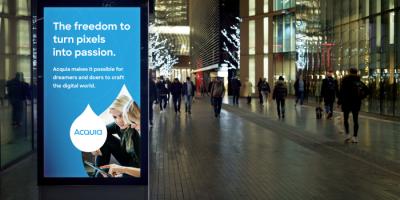Many organizations have documented brand guidelines and messaging standards, but a key component of brand management often overlooked is a brand library. It keeps your brand assets organized in one location for simple access, agile content creation, and secure collaboration. Marketing teams rely on this central source of truth for brand assets in order to build relevant digital experiences at scale.
One of the most common and effective ways of building a brand asset library is by investing in a digital asset management (DAM) system. With a DAM platform, your brand assets — including logos, videos, brand images, and font files — are available immediately around the globe via a secure permissioning structure.
Let’s explore further what a brand library is, the benefits that companies see from using them, and how to get started with yours.
What is a brand library?
| A brand library, or brand asset library, is a central location for storing, managing, and distributing all up-to-date brand assets. These assets include, but are not limited to, logos, fonts, videos, brand images, and marketing collateral. |
Your brand library enables people and systems to securely access these assets at any time. Giving teams a single repository for brand-approved materials helps keep marketing efforts aligned with your brand guidelines so that each step on the customer journey is presented consistently, which builds brand awareness and trust along the way.
Many brands choose to use a DAM system as their brand library because it offers more than just file storage. Advanced features including on-the-fly image and video conversions, configurable permissioning structures, and metadata-powered search that makes it easy to find, use, and share the files you need when you need them. With version control and embed codes, a brand library built with DAM also gives you the power to change linked brand assets across all your connected web properties with a single update. If you rebrand and have a new logo file, you can update the logo once in your brand library and the new version cascades everywhere the logo is connected to your DAM system.
What goes into a brand asset library?
Logos, brand images, videos, font files, critical marketing materials, PDFs, product photography, sell sheets, and more – brand libraries contain any digital asset important to your brand. If there’s a file your marketing team regularly passes around or can only get from one person, that goes into your brand library.
With configurable permissioning, multiple departments in your company can have their own asset libraries within a DAM system. The key is keeping everything in a central location and being clear on who needs — and has — access to what. Except for your DAM admin and maybe a few others, not everyone needs access to everything in your system. Being able to see everything can get super overwhelming very quickly. So understanding what brand assets you have and who needs access to them is a key aspect of DAM implementation and maintenance.
What are the benefits of a brand library?
A DAM-powered brand library offers many advantages related to cost, speed, global scale, accessibility, and distribution. Marketing teams find brand assets more quickly, and everyone has access to the current brand elements they need. Plus, content creators spend less time searching, freeing up their time for more meaningful work.
What else can you do with a brand library?
- Streamline content workflows. Use metadata-powered workflows. Set up no-code, rule-based automation to notify users of new content. Use artificial intelligence (AI) to apply metadata via auto tagging.
- Monitor content effectiveness. Leverage site- and asset-level analytics to inform decisions. Review change history for audits.
- Transform and reuse content. Convert images, videos, and audio on the fly. Set up common conversion formats for social media, slide decks, and webpages or edit as needed.
- Publish brand-approved assets. Keep track of asset versions. Update once and publish everywhere.
- Self-serve access. Empower your teams, no matter their region or time zone. Control access with flexible roles and permissions or share with portals and links.
Where to go from here
Build your own brand library to give the right people (and systems) easy access to brand assets and enable secure collaboration from any location. Ultimately, a brand library enables you to create more personal and effective digital customer experiences over time. With all your brand assets in one place, you increase brand consistency, build brand awareness, and save time in your workflows.
Interested in starting your own brand library? Take a look and see how easy it is to create a brand library with DAM.



